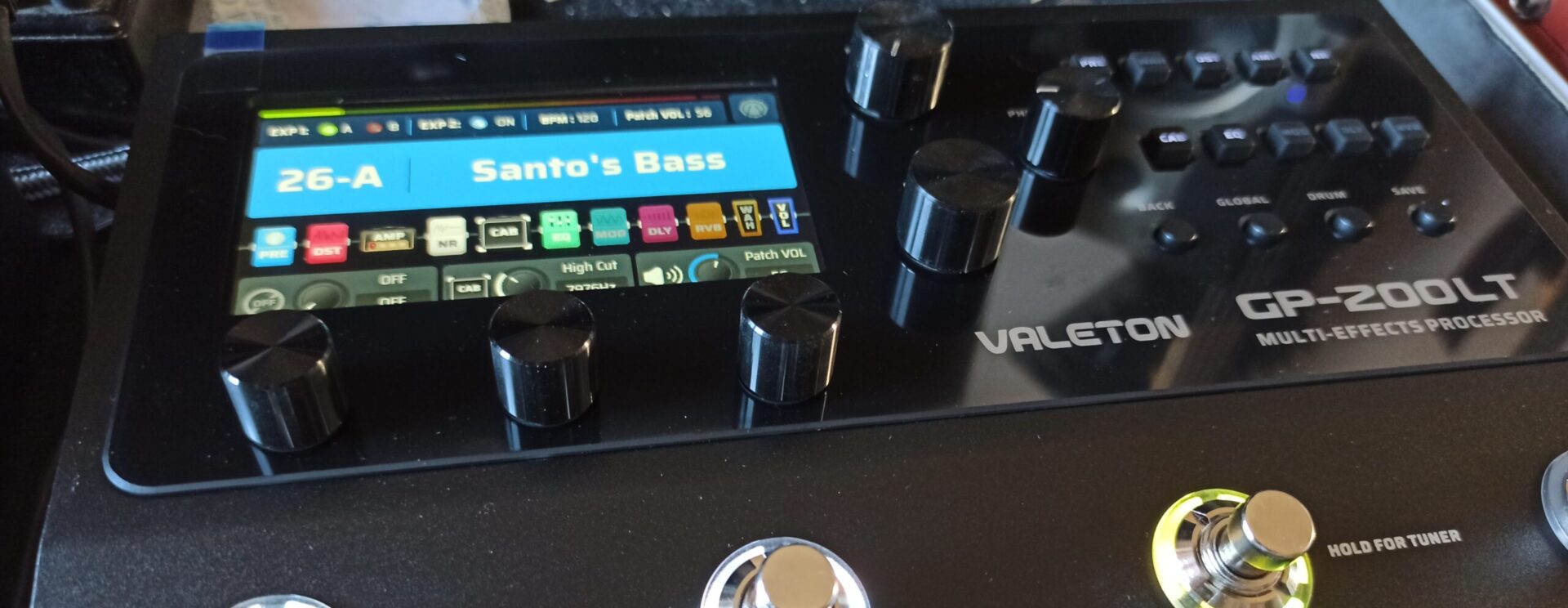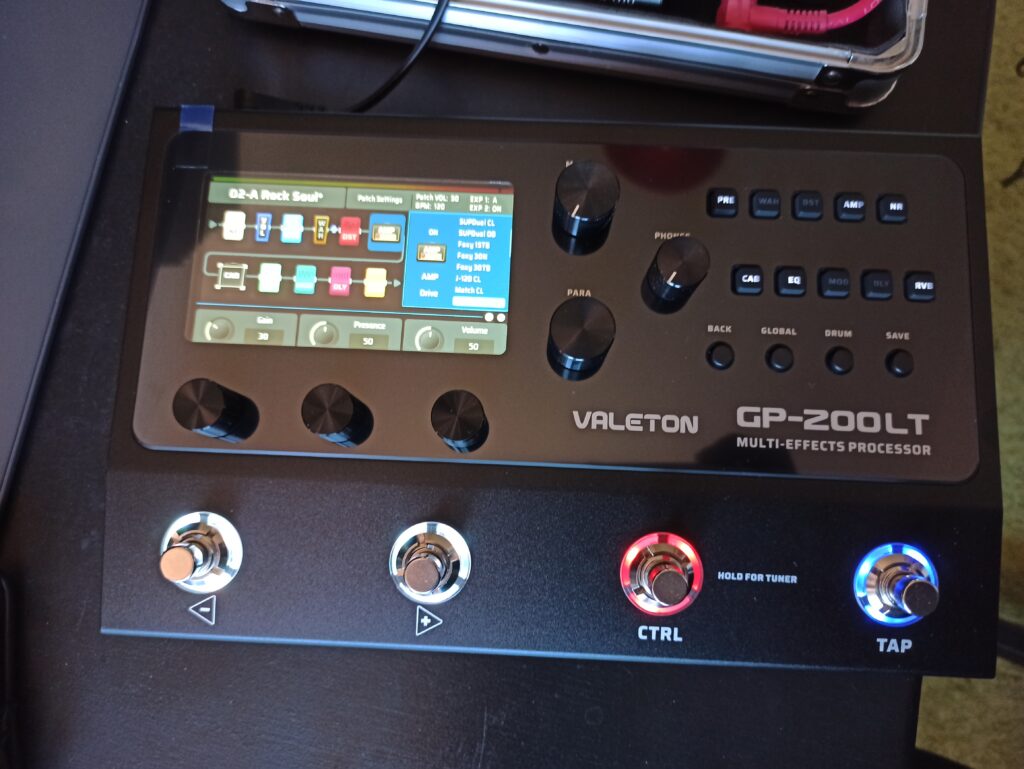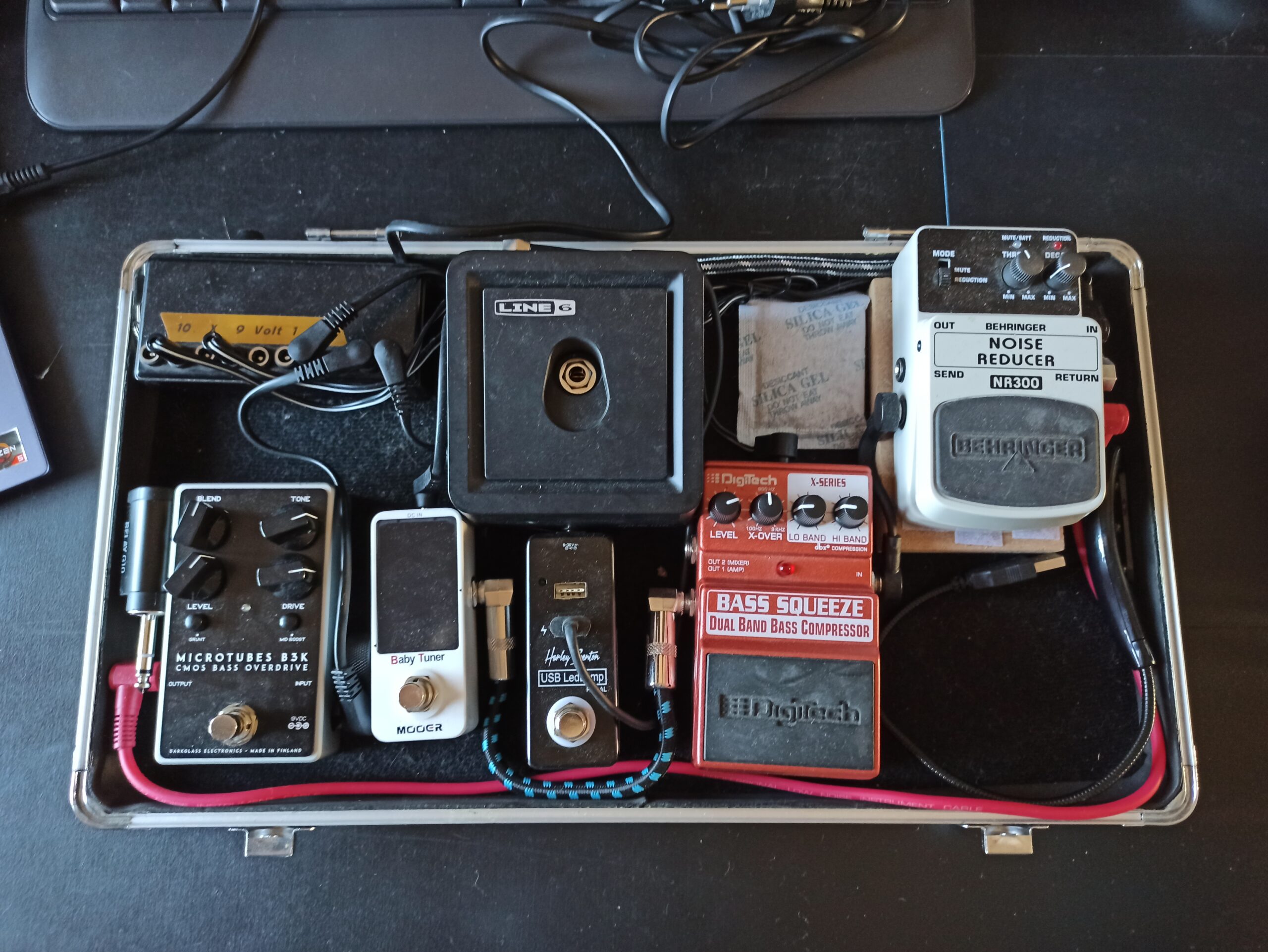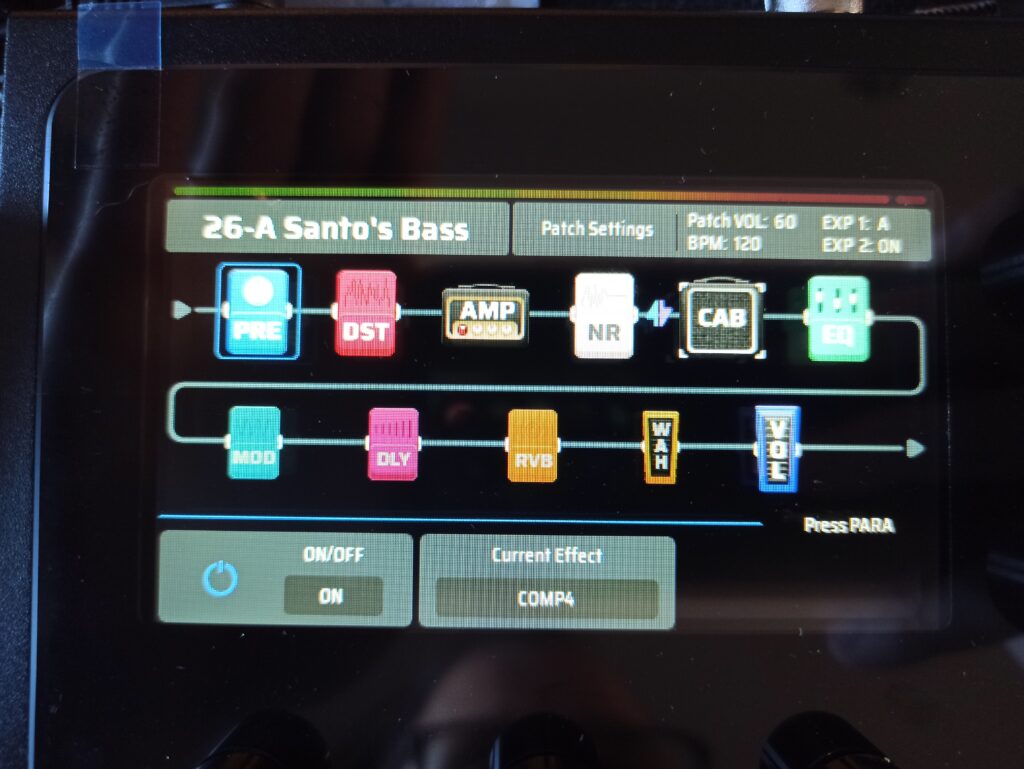Back to “digital“. After a few years of playing with my pedalboard made of individual pedals, I’m back using a multi-effects pedal. In the past, I had already used a multi-effects pedal (the reliable and glorious Zoom 506-II Bass), but that was a toy compared to the latest arrival: the Valeton GP-200LT.
First of all, I’m fully satisfied. I’ve been following the used market for months, looking for a good deal on a Helix HX Stomp. The price of a new unit has now reached almost €600, and it has steadily increased over the last three years, perhaps due to the chip shortage crisis or the fact that it’s in high demand, anyway it’s over my budget. In the used market, it hovers around €400, but only if you’re really lucky. The average price is now around €450 (at least here in Italy). I decided that I didn’t want to spend that much money, so I started looking for cheaper competing models. I was looking only for units with a comparable form factor, so no units with an expression pedal included or anything like that. After considering the Hotone Ampero Stomp, which has also reached the not insignificant price of about €450, my attention turned to the GP-200LT. In particular, the form factor of the GP-200LT (the twin of the GP-200 but without the expression pedal and with less footswitches) is ideal for me and fits nicely in the case that has housed my individual pedals for years.
In the end, I got it on Amazon for €279 (and the next day it was already down to €263… but never mind) and in my humble opinion, it’s worth much more. I find it extremely easy to use; I had the opportunity to mess around with the interface of a Line6 POD Go not long ago, and I find them absolutely comparable in terms of usability. Perhaps the Valeton is slightly more intuitive.
What was the real purpose of switching to this type of multi-effects pedal? Simply to have a cabinet simulation output. It may seem absurd to completely change the composition of a pedalboard for this reason alone, but since we built our in-ear monitoring system with From The Depth, it was a necessary change: the XLR output of my amp head doesn’t have a cabinet emulation (I would be curious to find bass amp heads with emulation; if you know any, comment below), and I’m also forced to bring my pedalboard and amp head with me every time, which is a bit of a hassle. With the Valeton, I was able to reduce the size of the pedalboard and remove the need for the amp head. Not bad.
How does it sound? Great. I’m particularly satisfied with how I recreated the same sound that I normally had with individual pedals, and in a very short time. Below you can see the effect chain I used to reproduce “my” sound (how egocentric is this phrase), and I will talk more about the patch in a future post. Maybe I could do a little tutorial, we’ll see.
It’s totally feasible to build a sound from scratch (in addition to modifying existing patches) using the knobs available on the GP-200, but I found it much easier and faster to use the software you can download from Valeton website, which you can find at this link.
As if that weren’t enough, it also works as a USB audio interface for recording. Here things get even more interesting, but I think I’ll dedicate a separate post to the details of this feature. As a preview, you can listen below to a 30-second clip that I recorded on the fly using the Valeton as an audio interface, with two patches I created for both guitar and bass, the latter being the patch I’ll use during live gigs.
To me, it sounds very good for the price, totally satisfied. I’ll keep you updated about it in live situation!






Leave me a Comment